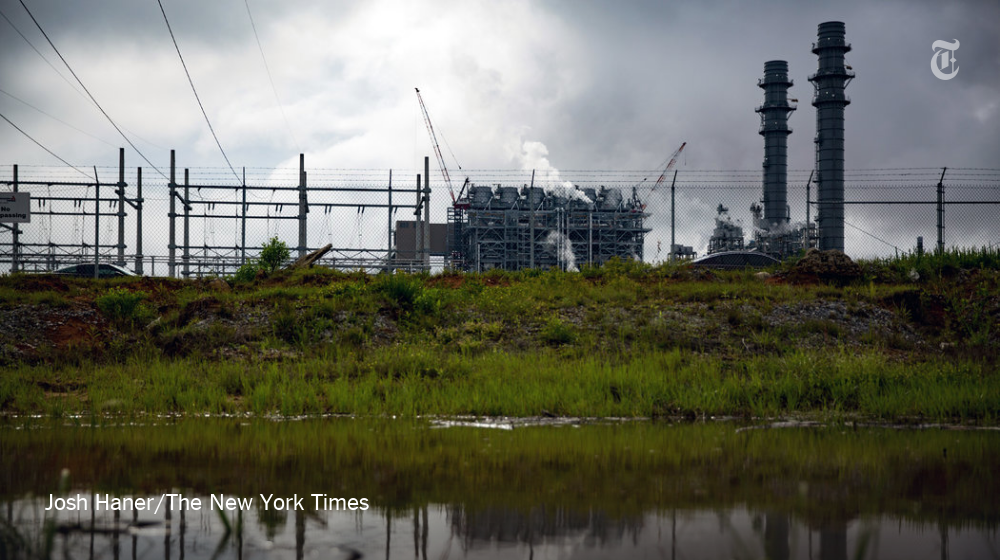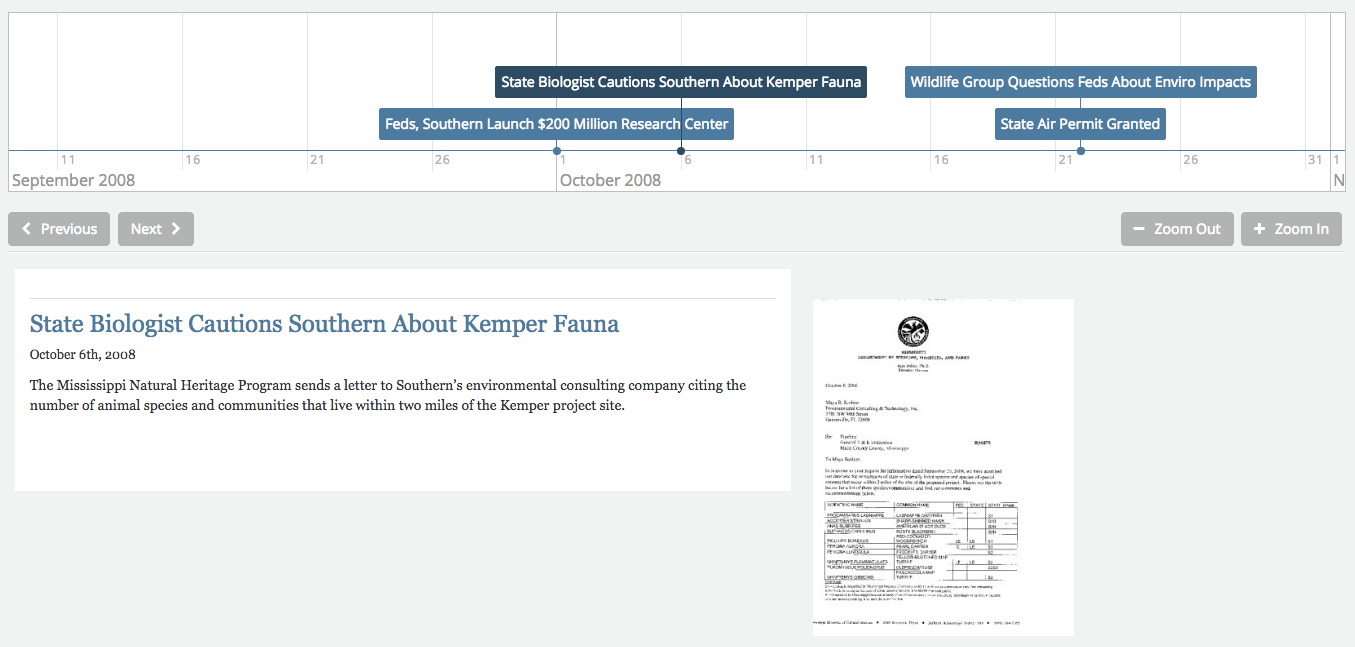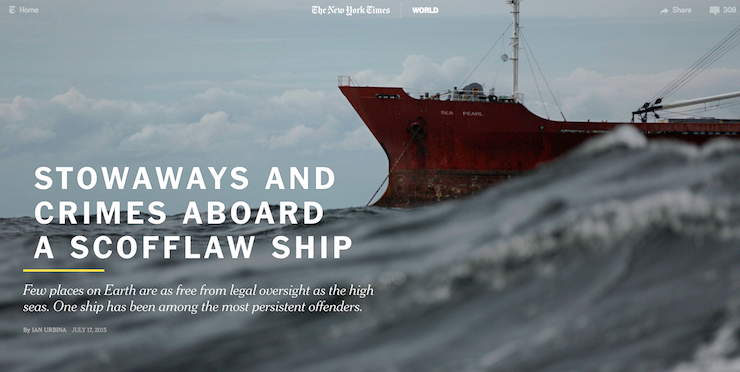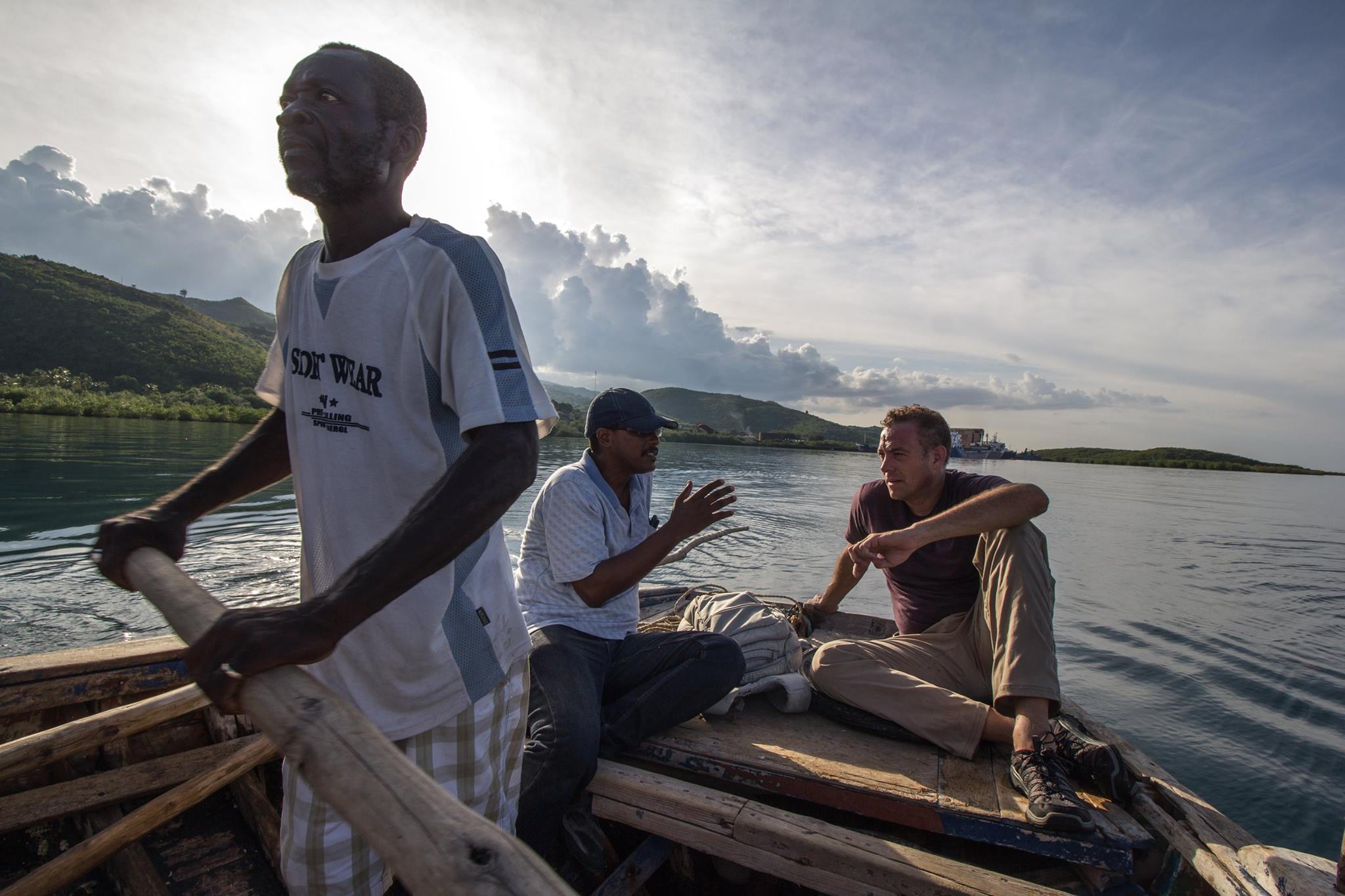New York Times investigative journalist Ian Urbina shares thoughts from his digital playbook
Ian Urbina, a New York Times investigative reporter, recently exposed ethically and environmentally questionable practices at the Kemper coal plant in Mississippi. The plant was supposed to be one of America’s first large-scale efforts to wean itself off non-renewable fuel.
As he sat down to write and map out what the story would look like, Urbina had to unpack and synthesize months of research and reporting including 200 hours of surreptitiously but legally taped phone conversations between employees at the plant and thousands of documents including internal reports and emails.
As an investigative reporter working on an in-depth project, the question for the Pulitzer-prize winning Urbina was how to best organize so much information. Which digital tools might best help tell that story?
Storybench spoke with Urbina about the problems and promises of this new age of storytelling, his thoughts on presenting primary documents online, tools for organizing material at the reporting stage, and advice for journalists learning how to incorporate digital skills and tools into their work.
How is today’s journalism environment different from when you started out? How has your process changed?
As things sped up on the rat wheel that is the news cycle, I actually moved further and further away from the rat wheel and arrived more to the place where I wanted to be, which is where I am now, which is in investigative, long-form projects. And so I’m not at all susceptible to that problem.
But I think what I would say is that because of digital, I fell in love with this notion that in some cases, rather than doing a two-dimensional story, using a three-dimensional platform when doing these stories. By that I mean the visual realm allows you to put up documents and to make these individual stories much deeper.
I noticed that with “The Outlaw Ocean“ series, you largely used video and photography, and with “The Secret Life of Passwords,” you paired audio with nonfiction graphics. But with the Kemper power plant investigation, the History Project helped you sort audio and documents. How do digital tools influence your thinking throughout the course of working on a piece?
Wow, I’ve explored a weird party of characters in my work, haven’t I?
On the simplest level, I think the medium effects the message. When I’m working on a story, half-way through I have an idea of what assets are going to be significant. “The Secret Life of Passwords” was a weird thing—a passion project that I would work on on the side for years and didn’t share with editors. Finally when it was ready to let out, I took it first to the very talented Leslye Davis. She does this magical work with video, you’ve got to check her out.
But most stories aren’t like that—you know you’ll get a certain amount of video input early on, and you start to edit yourself accordingly. You start to ask yourself, how much storytelling do I not need to do, or not want to do, because the video team is going to take that on. You start to build in where a graphics team will lift some of the burden that a project this size requires. You have a team helping to carry the cargo, which means that you can let your story breathe. If you’re alone on this hike, you’re going to have a really heavy backpack.
So I think it affects your writing in the sense that you know you have a team helping to carry the cargo, and the more people you recruit the more weight you can spread across those shoulders and focus on the storytelling, and actually make it narrative and give it voice.

So how about your most recent piece on the Kemper coal plant? You collaborated with with The History Project to create the Kemper Coal Files Timeline, but what’s involved in incorporating digital tools like these?
The timeline, or the document reader, is like another passenger on that hike—it’s a huge, gigantic player in the mix that can do a lot of work for you. If you know you’re going to employ a tool like that, you know you don’t have to cover a lot of ground, you’re just going to dump it into the reader for the more in-depth crowd.
The only problem you run into, going way further into the rabbit hole, is that the document reader in PDF form was 274 pages long, and my annotations were an additional 60 pages I threw up in a Google doc. So you’ve written a book, and it’s a week before publication, and you go to the copy editor and tell them it’s a 60-page thing. They are not happy. So there’s a challenge even just to back field it and navigate that to make sure all parts of the process run smoothly.
The thing that was great about working with the folks over at The History Project was that I knew we had this cousins relationship with them through the Times, so it was great knowing we were trying to achieve the same objective coming from different backgrounds. I talk a bit more about this in a Times Insider piece that peels back some of the inner workings behind the article.

Over your New York Times tenure, how have digital tools helped your reporting?
I think it’s helped me because I am sort of mildly obsessive when it comes to ensuring the quality of a piece, and I think I have a pretty small brain that can only handle a certain amount of information. This means I have to rely on lots of systems to keep track of the stuff that I can’t keep in my head. So for anyone who does long projects that take a year to investigate and requires mastering a lot of information, digital in general, upstream from storytelling, helps me organize everything in a way that allows me to find my way back out of the woods, and share a story with everyone. There are just a lot of little things to keep track of in a story this deep and expansive.
Speaking about VoiceBase for a moment, which I used in the Kemper article, reflecting on it, I think, “Wow back in the day you had to listen to the entirety of the thing and I kind of remembering him saying something, but I don’t remember when.” And now you’re just dumping into a tool like VoiceBase and you move your cursor to the spot in the transcript that you are looking for with the audio right there, and you find your sentence. You listen to it again to make sure it’s 100 percent accurate, but boy, that’s six seconds as opposed to what would have been twenty minutes, and that adds up.
On the flip side, how have digital tools hindered reporting?
There are too many output channels now that we are expected to be producing. And now you’re going to hit me with my own stick because I just created another one with the Timeline. But with social media tools like Twitter and Facebook and Instagram—we’re kind of supposed to be manning those stations ourselves while we’re producing work. And it sounds easy, like “oh, just a couple more pipelines that you’re pushing the same stuff through.”
Not really, because you’ve got to package it differently, use your downtime to feed stuff through these channels, and it takes a lot of management. The alternative is to unplug, just produce your paper, and let everyone else do their thing. Well, that’s crazy, because if you look at the numbers, a great story put up on the internet will get half the traffic as a mediocre story if it’s not put on Facebook. Which makes you think: “Wow, these channels are really where it’s happening,” and if I’m not in those spaces, it’s sort of a situation where the tree falls in the forest with no one to hear it—it’s a great story but no one read it, so is it a great story? I don’t know!

In addition to social media tools, what are other ways digital devices impede journalistic goals? Is it that the digital realm is so fast paced that it’s hard to keep up, or that having something like the Timeline (while it makes the material more digestible) makes the story less personable?
So digital within storytelling outside of production channels. I do think there is so much razzle-dazzle out there in terms of stuff you can use now, like timelines, that it’s easy—especially for me who’s distractible—to get enamored with lots of these things, to get overcommitted and overextended. It’s great to want to build the timeline, and I think it’s worthy for the reasons that I still stand by. But you’re right on the edge of taking on too much, so do you water down your original mission? Because now you’re splitting yourself between mastering all of these tools and making sure they’re going to be ready for publishing and adding all of these annotations to them when you should just be focusing on telling the 4,000-word story. Period. Just work on that every day and tell that story well, and then let the other stuff be handled by someone else.
And this may be reaching too far back, but I think that in storytelling, the reality is, as a journalist who’s trying to figure out what happened out there, there’s almost too much information because of the internet. So I think that also ends up being a challenge.
The Internet and this unprecedented digital era goes hand-in-hand with young journalists in the field today. What would you suggest they do to take advantage of this fluid digital age?
I think on the one hand, I would say don’t get too sucked into this black hole, don’t get pulled too far out of the development of a story because then you’re pulled out of what the story is that you’re going to tell and what the facts are.
In other words, there are old school fundamentals that I have to constantly revisit—every day I try to set aside half an hour when I’m just going to read something because it’s well written. And I’m just going to study it—for structure, for turn of phrase, whatever it is. And that’s like morning push-ups, it only works if you do it every single day. And I think the digital stuff is so enticing, that if you forget to work on the other stuff, you lose those basics.
The flip side is that I do think that the younger set should be really hopeful because the space that they are growing up in, the air they breathe, the social media and the devices and—I’m sounding like an old guy now—but the stuff that’s second nature to them is not second nature to the age set above them, and that really gives them a huge advantage and they should leverage that.
But I would also say documents, documents, documents. [inlinetweet prefix=”” tweeter=”” suffix=”– @ian_urbina”]Hopefully folks will continue to tether journalism down to the primary sources[/inlinetweet].
So would you recommend J-school students keep digital supplementary and not the focus?
Yeah, that sounds kind of old school, but I think it sounds right to me. I think digital is great, but you first have to get the cargo, and then you can decide what car you’re going to drive. If I was in journalism school or teaching, I would say just work on your writing and your reporting, and then play with digital and storytelling methods. [inlinetweet prefix=”” tweeter=”” suffix=”– @ian_urbina”]You need to know how to write well and report well first[/inlinetweet]. And also quantity—man, it’s an endurance game now.
Speaking of journalism school, what would be in your curriculum?
I can only promote what works for me, knowing full well that might not work for others. What works for me is I would select a list of journalists to read, even if I’m not interested in the topic, because that’s how I learn to be a better writer and thinker. So I’d have some sort of staple that is very regularized of just reading for the sake of writing and the architecture.
If I were creating a curriculum I would establish a few case studies and sit on them for a week. I would do an autopsy, open up the chest and look at everything in there—look at how it was built, what it took to get the raw stuff, and look at all the different elements—how long it was, what’s the piecing, the content.
I heard you’re speaking at the Society of Environmental Journalists’ (SEJ) conference. What will you tell veteran journalists?
I’ve never done a conference before, I’ve done other speaking things, especially in recent years on the “Outlaw Ocean.” I think I’ll speak a fair amount about that series which I’ve put down for a bit but will pick up again January of next year. And just talk about the things that most interest me in that series.
And I think the “Outlaw Ocean” to some degree accomplished a goal that I have to take an approach that breaks out of the typical silos – these are duck-billed platypus-type stories. It wasn’t just about enviro matters, it collapsed the blue green divide – the green was the enviros, the blue the human and labor rights, anti-trafficking and slavery folks. The Secretary of State got it spot on when he said the sea slavery story is the illegal fishing story, it was all part of the same overarching problem which is that that space is ungovernable. So I think that’s what I’ll talk about, how the best environmental stories aren’t purely environmental stories.

So is that what you’re working on next? Adding on to the Outlaw series?
I’m going to take a one to two year leave and pursue a book and a movie which came from the series, and from now until the end of this calendar year I’ll be working on producing for the climate change cluster.





